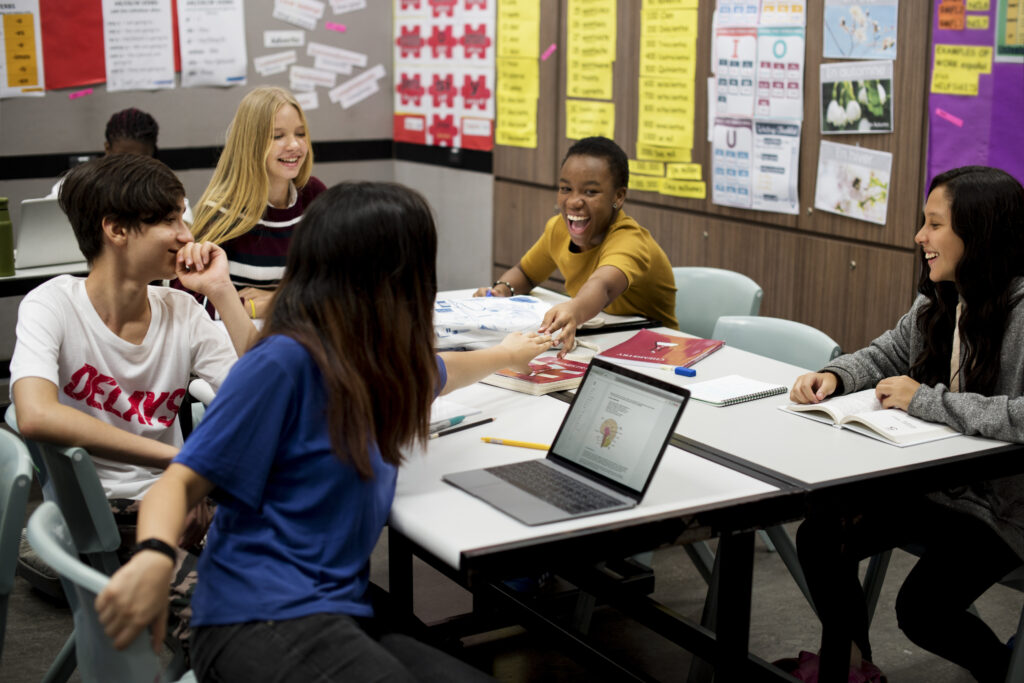
Four effective, high-leverage professional learning strategies for transforming your PLCs
“What does collaboration look like for your teachers?”
This is one of the first questions we ask when we engage with school and system leaders. In most cases, we learn that while there are professional learning communities (PLCs) in place, they are not effectively serving the needs of the teachers or the broader school community.
As a field we know what makes for strong PLCs, but often struggle to operationalize those understandings to effectively support students. As a result, teachers often come together without clear purpose, and the precious time they have to collaborate together can be seen as a compliance activity.
To provide meaningful support for teachers, research shows that professional learning should be*:
- grounded in a larger learning system and culture of trust and collaboration;
- connected to the school’s other initiatives;
- curriculum-specific;
- focused on four types of knowledge—equity, curriculum, content, pedagogical; and
- led by those with deep knowledge of the content.
When we studied the differentiating actions of leaders who successfully implemented high-quality curriculum, we found that, although everyone trained their teachers on new materials, those who also had aligned structures for planning and coaching saw improvement. In addition, we found that unit internalization and student work analysis proved to be more critical in supporting unfinished learning.
We then interviewed multiple stakeholders from successful school systems—including district leaders, instructional coaches, and our own staff—to gain greater insight into the teacher support occurring within those schools. Though our research is still ongoing, we identified four effective high-leverage professional learning strategies:
- Unit internalization
- Lesson preparation
- Student work analysis
- Observation and feedback
Explore our Professional Learning Conditions and Practices to access guidance and resources for implementing these four strategies.
Four strategies for effective, high-leverage professional learning
Unit internalization
Unit internalization is the process by which teachers study a unit to deeply understand what students are expected to learn, how students will be assessed, and the unit’s arc of learning. In most of the schools we interviewed, unit internalization is a critical practice because it anchors teacher support in instruction.
During internalization, teachers identify the lessons they may want to focus on, as well as which student tasks they want to analyze for evidence that students are progressing. Teachers can engage in this process collaboratively or with a coach.
Lesson preparation
The schools we interviewed took several approaches to lesson preparation:
- Lesson internalization: Similar to unit internalization, lesson internalization is the process by which teachers study the lesson to understand what students are expected to learn, then use that understanding to make decisions about how to deliver the lesson content.
- Practicing lesson delivery: Teachers select a part of a lesson they want to practice prior to teaching it to students, practice teaching it to an audience of their peers, and gather peer feedback on how to improve.
- Strategic internalization: Teachers follow a process similar to lesson internalization, but limit their focus to a specific teaching practice they are trying to implement in their instruction—for example, internalizing only for discourse or questions.
Student work analysis
Teachers analyze student work to norm on expectations for student mastery, identify trends in mastery within their classes, and determine how to address students’ needs. Student work analysis typically occurs as part of weekly planning meetings where teachers discuss student work from tasks identified during unit internalization or lesson preparation.
Observation and feedback
Instructional leaders observe teachers to identify trends in execution, then follow up to support improvement. This can be accomplished in individual or group settings:
- Individual: Teachers meet with their coaches (e.g., instructional coach, teacher leader, school leader) and receive specific feedback.
- Group: Leaders facilitate practice clinics focused on skill-building.
Applying the strategies: Bedford County Schools
Last year we partnered with a leader in Bedford County Schools, a small rural district in Tennessee, to help bring to life what we know to be true about effective PLCs. Read the case study here, or watch our Partner Voices interview with school leader Layne Talbott.
—


